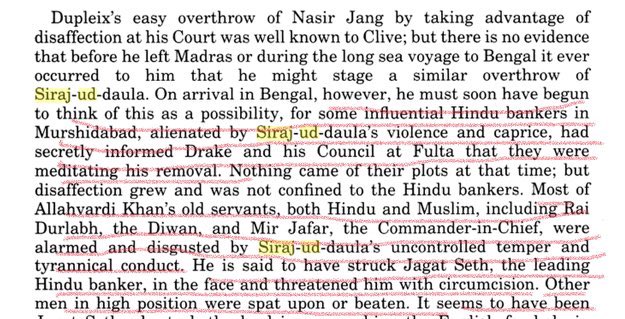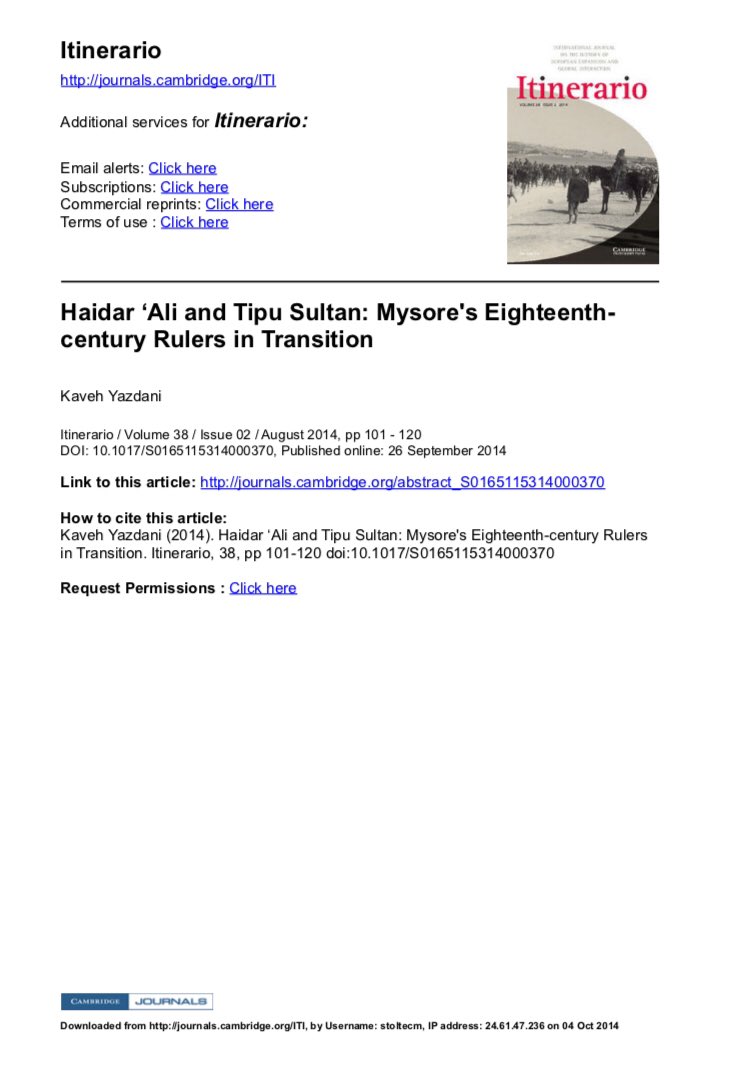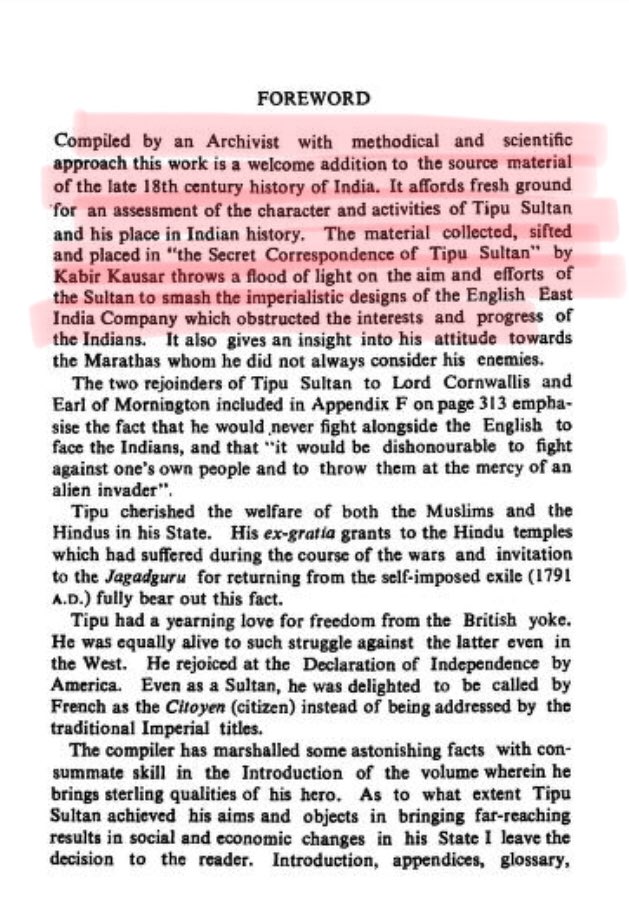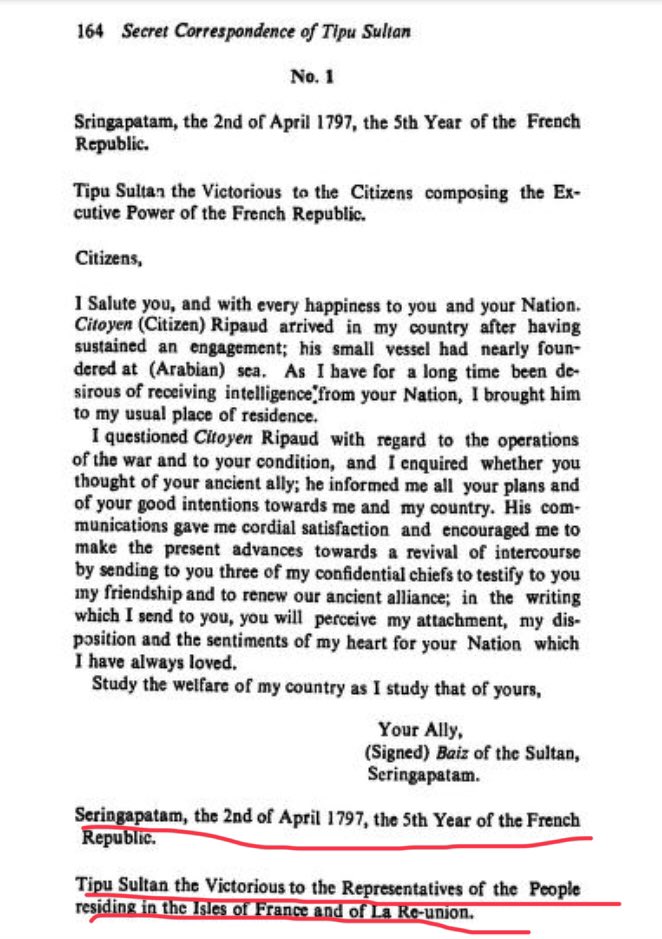1/n #SadarPranam @sagarikaghose ji, let me expose ur list of patriotic kings one by one. Follow the thread.
1)Siraj-ud-daulah
Siraj ws losing grip on Bengal for his tyrant character & Sexual Debauchery. He used to disguise himself as a woman &gain entry into the women’s quarter

1)Siraj-ud-daulah
Siraj ws losing grip on Bengal for his tyrant character & Sexual Debauchery. He used to disguise himself as a woman &gain entry into the women’s quarter
https://twitter.com/sagarikaghose/status/1211283523589439489

2/n Among his victims was the daughter of Jagat Seth. Certainly, Siraj was forming various such enemies because of his pervert & tyrant character. Shouldn’t one have a doubt that why Jagat Seth sided with East India Company, essentially against his own enemy. 

3/n Source for 1/n & 2/n Calcutta: A Cultural & Literary History by Krishna Dutta
The character of Siraj was reputed to be worst ever known.He had not only distinguished himself in all shorts of debaucheries but also by revolting cruelty.
The character of Siraj was reputed to be worst ever known.He had not only distinguished himself in all shorts of debaucheries but also by revolting cruelty.

4/n The Hindu women were accustomed to bath on the banks of Ganges. Siraj-Ud-Daulah who was was informed by his spies which of them were beautiful, sent his satellites in little boats to carry them off.He was often seen in season of floods, causing the boats to be upset or sunk. 

5/n He did so in order to have the cruel pleasure of seeing the confusion of a hundred people at a time, men women & children of whom many, not being able to swim, were sure to perish. Every one trembled at the name of Siraj-Ud-Daulah. 

6/n Source for 3/n-5/n: History Of Bengal Vol. 2 by Jadunath Sarkar
On arrival in Bengal, Clive must have soon begun to think of this as possibility, for some influential Hindu Bankers in Murshidabad, alienated by Suraj’s violence & caprice,had secretly informed...contd
On arrival in Bengal, Clive must have soon begun to think of this as possibility, for some influential Hindu Bankers in Murshidabad, alienated by Suraj’s violence & caprice,had secretly informed...contd

7/n ...Drake & his council at Fulta that they were meditating his removal. Most of Alvardi Khan’s servants, both Hindu & Muslim, including Rai Durlabh, the Diwan & Mir Jagat, the Commander in Chief were alarmed by Siraj’s uncontrolled temper & tyrannical conduct.
8/n He is said to have stuck Jagat Seth, the leading Hindu Banker, in the face & threatened him with circumcision. Other men in position were spat upon or beaten.
Source for 6/n-8/n :The British Conquest and Dominion of India by Penderel Moon
Will now tell about Tipu from 9/n
Source for 6/n-8/n :The British Conquest and Dominion of India by Penderel Moon
Will now tell about Tipu from 9/n
9/n @sagarikaghose ji, let’s discuss about ur second hero now.
There are enough writers who indulge in false glorification of Tipu, through secular & tolerant make up.
Kavesh Yazdani in one such subtle whitewasher. Let’s see how.
There are enough writers who indulge in false glorification of Tipu, through secular & tolerant make up.
Kavesh Yazdani in one such subtle whitewasher. Let’s see how.
10/n Yazdani praises Tipu. He says: Tipu was also aware of AmericanWar of Independence & reportedly uttered, 'Every blow that is struck in the cause of American liberty throughout the world,in France,India & elsewhere...” Source in snippet. But let’s inspect Yazdani’s assertion.




11/n @sagarikaghose hope you notice, Yazdi cites note no 62 for his reference. Let’s check what is it.
It happens to be Kausar,Secret Correspondences of Tipu Sultan, 306
So as next step of enquiry let’s go there. Read next tweet to know the lie.
It happens to be Kausar,Secret Correspondences of Tipu Sultan, 306
So as next step of enquiry let’s go there. Read next tweet to know the lie.

12/n While inspecting the book(Kausar) cited by Yazdani, I find the existence of statement which happens to be part of Appendix F(based on “Sword of Tipu Sultan”).
So now next we need to enquire “Sword of Tipu Sultan” by B.S.Gudwani).


So now next we need to enquire “Sword of Tipu Sultan” by B.S.Gudwani).


13/n In Secret Correspondence of Tipu Sultan, page 303.The first sentence in the appendix is: “The quotations given below show different facets of Tipu's philosophy and character.” Then the quotations were given under different headings. 

14/n It’s interesting that nothing is secret about the correspondence of Tipu in the book.
Why Kausar has called it Secret?🤔
Perhaps, to attract attention. But that for sure isn’t Gidwani's fault! It is Kausar's in the first place.
Why Kausar has called it Secret?🤔
Perhaps, to attract attention. But that for sure isn’t Gidwani's fault! It is Kausar's in the first place.
15/n The sentence as quoted (rather misquoted)by Kausar, & blindly repeated by Yazdani,is from Gidwani's novel on page 210. “(The Sword of Tipu Sultan, page 210. Italicized words were omitted by Kausar; Yazdani blindly followed him.) 😀
Let’s check on more!
Let’s check on more!
16/n In the novel this is the last sentence in Tipu Sultan's address to a large assembly of Indian & French officers. It is not an actual address delivered by Tipu; but cooked up in Gidwani‘s novel.
I challenge any Eminent Historian to prove me wrong. @sagarikaghose outsource
I challenge any Eminent Historian to prove me wrong. @sagarikaghose outsource
17/n Kausar believes that such imaginary quotations will “show different facets of Tipu's philosophy and character!”
Interestingly,in the foreword to his Secret Correspondence of Tipu Sultan, B. R. Grover, the then Director of ICHR, says:👇🏼
Interestingly,in the foreword to his Secret Correspondence of Tipu Sultan, B. R. Grover, the then Director of ICHR, says:👇🏼

18/n So that’s how ICHR played crucial role in making hero out of a marauder Tipu Sultan. In fact B.R.Grover praised Kausar’s work, the sources of which are all misplaced & non-authentic.
I’ll discuss of his marauding nature in following tweets.
I’ll discuss of his marauding nature in following tweets.
19/n Let’s inspect @sagarikaghose ‘s claim.
Tipu: Patriot?
An anthology, edited by #IrfanHabib,(not @irfhabib ),”Confronting Colonialism: Resistance and Modernisation under Haidar Ali and Tipu Sultan” was published as if it was Tipu who was confronting Colonialism! 😂
Tipu: Patriot?
An anthology, edited by #IrfanHabib,(not @irfhabib ),”Confronting Colonialism: Resistance and Modernisation under Haidar Ali and Tipu Sultan” was published as if it was Tipu who was confronting Colonialism! 😂
20/n He is the same #IrfanHabib who heckled @KeralaGovernor & told lies about #VishnuHariInscription misleading the Allahabad High Court.
Let’s move on about Tipu Sultan though.
Let’s move on about Tipu Sultan though.
21/n Tipu fought just to save his kingdom and failed. Why should that make him a patriot in the cause of India's independence? Hitler, too, fought against the British. He did so, not for Germany but because they were a hindrance to his plan of enslaving the Poles & the Russians.
22/n Francois R,captain of a French Ship dismasted in Feb1797 &put in Mangalore was a conman who represented himself as second-in-command at Mauritius,then under French rule,authorized to discuss Mysorean cooperation with a French force already assembled to expel Brit from India.
23/n Tipu fell for it & wrote a letter to French Authorities, dated 2-4-1797.
Read these excerpts of letter where Tipu invites French to colonise. Hence I’m short of surprised how @sagarikaghose thinks replacing French by English by Tipu was idea of patriotism.
Read Articles.




Read these excerpts of letter where Tipu invites French to colonise. Hence I’m short of surprised how @sagarikaghose thinks replacing French by English by Tipu was idea of patriotism.
Read Articles.




24/n In the articles added to the letter by Tipu “Goa” & “Mangalore” can be seen negotiated about.
Whole south-India was at sale through hands of Tipu.
Snippets are continuation of the letter.




Whole south-India was at sale through hands of Tipu.
Snippets are continuation of the letter.




25/n More from the letter written on 2-4-1797.
From letter:.. French shud send “10k(French)soldiers”& “30k Blacks”to support Tipu & in return the territory & property which might be captured from the British & the Portuguese were “to be equally divided” amid the French and Tipu.




From letter:.. French shud send “10k(French)soldiers”& “30k Blacks”to support Tipu & in return the territory & property which might be captured from the British & the Portuguese were “to be equally divided” amid the French and Tipu.




26/n If we refer to Tipu’s letter to Zaman Shah, the ruler of Afghanistan, dated 5th February, 1797: They were to unite in a jihad against the infidels and free the region of Hindustan from the contamination of the enemies of Islam.
Read letter for yourself @sagarikaghose


Read letter for yourself @sagarikaghose


27/n The Shah was to expel the Marathas from Delhi & then the Afghan army from the north & Tipu's from the south were to crush the remaining power of the Marathas in the Deccan.
This was Tipu's so called anti- colonialism: reestablishment of Islamic rule in India @sagarikaghose
This was Tipu's so called anti- colonialism: reestablishment of Islamic rule in India @sagarikaghose
• • •
Missing some Tweet in this thread? You can try to
force a refresh































